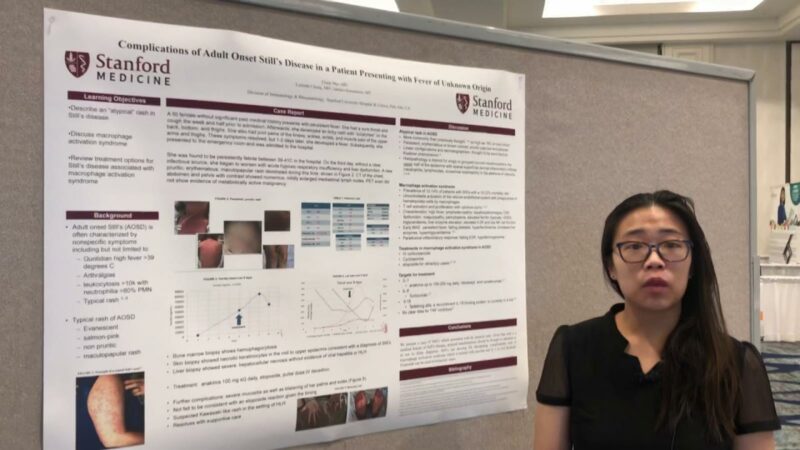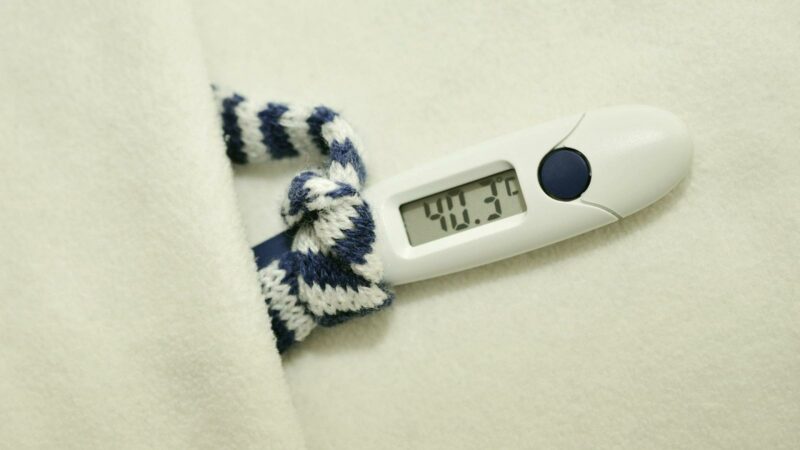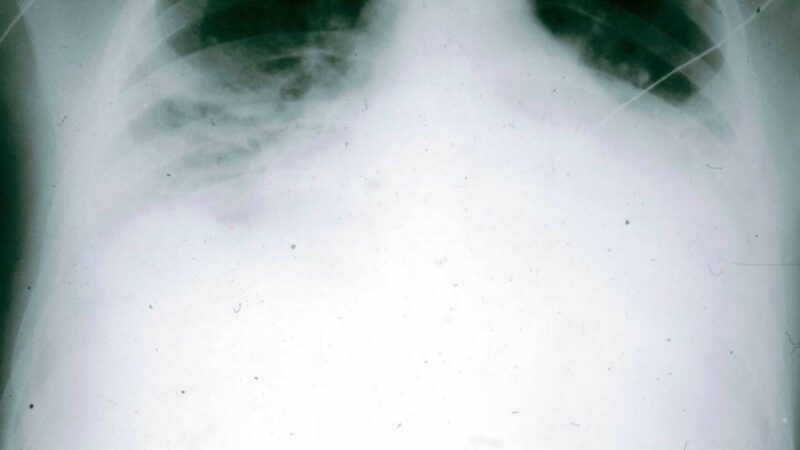Begin – are you treating “systemic” or “articular” (arthritis) Still’s disease? Most Still’s patients have a dominance of one or the other. With certainty, the right therapy for the right symptoms can be chosen.
- Systemic disease: key symptoms/findings include high daily fevers (>102oF), rashes, pleuritis or pericarditis, enlarged liver/spleen/lymph nodes, wt. loss
- Labs: active disease is indicated by very high ESR, CRP, WBC, ferritin levels, aldolase, increased LFTs; with anemia (low Hgb/Hct), low albumin
- Articular disease: key symptoms are multiple painful, swollen joints (usually hands, wrists, knees, ankles, feet, shoulders), often with fatigue & stiffness
- Labs: active disease usually has normal WBC, mild anemia, increased ESR or CRP, negative tests for ANA & RF. (Normal: ferritin, albumin, LFTs)
Sequential Drug Use – The goal is to rapidly control of pain and inflammation – this is starts with using “1st Line Therapy”.
- 1st Line Therapy: start with drugs that act quickly (hours, days). The potential down side of fast-acting drugs may be long-term side effects; this is the case with NSAIDs and steroids; see Best Drugs Table below. With time 1st line drugs are replaced by more long-lasting therapies – “2nd Line Therapy”.
- 2nd Line Therapy: these drugs are referred to as Disease Modifying Anti-Rheumatic Drugs (DMARDs). DMARDs may be oral pills or injectables and are typically a) slow-acting (weeks to months), b) given chronically (often called “steroid-sparing drugs”), and c) are given to change the underlying disease. “Biologic” DMARDs (injectable or parenteral) are similar to your body’s proteins, and are used to specifically regulate an overactive immune system.
When Not Responding? While most patients respond well to the treatments noted below, some patients may have an incomplete or no response, or become unresponsive to a drug that once worked well. Three key questions need to be answered when the patient is not responding (or refractory): (1) Is this the right diagnosis? (2) Is this Systemic or Articular disease? (3) I there another problem (new diagnosis/complication or medication side effect developing)? Off-Label Use: When poorly responsive or refractory to standard DMARD or biologic therapy, numerous options can be considered. All of these are considered “off-label”, as these treatment options are not FDA approved for use in Still’s disease. Nearly all treatments used in Still’s disease are “off-label” because Still’s is a very rare, for which there are few studies that might lead to FDA approved drugs. Only tocilizumab & canakinumab are FDA approved for use in children (sJIA) and only canakinumab is FDA approved for adult-onset Still’s disease (AOSD). MAS (Macrophage Activation Syndrome): MAS is a severe complication of “systemic” Still’s disease, where uncontrolled, hyper-inflammation can lead to organ damage. MAS is associated with a 10-35% risk of death. MAS should be considered with very high fever, hypotension, altered mental status, very high levels of CRP, liver enzymes, and ferritin (often >10,000), along with a sudden drop in blood counts (leukopenia, lymphopenia, thrombocytopenia). Drugs used to treat MAS include high dose steroids, inhibitors of IL-1 or IL-6, emapalumab, cyclosporine, etoposide or JAK inhibitors. TREATMENT OPTIONS IN STILL’S DISEASE
| Treatment Stage | Systemic Disease | Articular Disease |
| 1st Line Therapy | Prednisone 60 mg/day (or >1mg/kg/day) (Or high doses of IV methylprednisolone) | NSAIDs Low dose Prednisone 5-10 mg/day |
| 2nd Line Therapy | IL-1 inhibitors SC IL-6 inhibitors SC or IV (Methotrexate may be added to above) | Methotrexate or Leflunomide TNF inhibitors SC or IV Canakinumab SC Tocilizumab SC or IV |
| Refractory Disease Drugs | Methotrexate JAK inhibitors IVIG | JAK inhibitors, Rituximab, Abatacept, Azathioprine Hydroxychloroquine, cyclosporine A |
Best Drugs Table
| Generic name | Example | Type of Drug | How given | Usual dose | How often? | Used to treat: | Adverse events | Monitor for: | |
| NSAIDS | Naproxen Ibuprofen Meloxicam | Antiinflammatory | Oral pills | Naproxen: 500mg Ibuprofen 600-800mg Meloxicam 7.5, 15 mg | 1-2 times daily 3-4 times daily Once a day | Joint pain, stiffness, aching, swelling | Nausea, Vomiting, Abdomen pain, gastritis, edema | Nausea, heartburn anemia, LFTs, creatinine | |
| Prednisone | Low dose Prednisone High dose Prednisone | Corticosteroid Antiinflammatory | Oral pills | Low dose 2.5-10 mg/d High dose 60-80 mg/d | Once a day One or split doses | Articular Still’s Systemic Still’s | Weight gain, HTN, diabetes, bruising, cataracts, edema | Weight, blood glucose, infection, DEXA | |
| Methylprednisolone | Solumedrol | Corticosteroid Antiinflammatory | Intravenous | 1-2 mg/kg/d | Divided doses (1-4 times / day) | Systemic Still’s MAS | HTN, diabetes, bruising, edema | Weight, blood glucose, infection | |
| Methotrexate | Rheumatrex | DMARD Antiinflammatory | Oral pills or Subcutaneous injection | 7.5-25 mg (Kids: 0.3-0.6 mg/kg) | Once a week | Articular Still’s Systemic Still’s | Oral ulcers, nausea diarrhea, headache Lethargy, ↑ LFTs | Liver problems, CBC, Kidney function | |
| Leflunomide | Arava | DMARD Antiinflammatory | Oral Pills | 10-20 mg | Once daily | Articular Still’s | Diarrhea, nausea, ↑ liver enzymes | CBC, LFTs | |
| Azathioprine | Imuran | DMARD Immunosuppressive | Oral Pills | 50-200 mg (1-2 mg/kg) | Once daily | Articular Still’s Systemic Still’s | Nausea, leukopenia | CBC, LFTs, H.zoster | |
| Hydroxychloroquine | Plaquenil | DMARD | Oral pills | 200-400 mg (< 5.5 mg/kg) | Once daily | Articular Still’s | Uncommon rash, pruritis, GI Sxs | Eye exams | |
| JAK inhibitors | Xeljanz, Olumiant, Rinvoq | DMARD | Oral pills | Xeljanz 11 mg; Rinvoq 15mg; Olumiant 2mg | Once daily | Articular Still’s | URI, Shingles, Acne, LFTs, ↑cholesterol | CBC, LFTs, infection,shingles | |
| Canakinumab | Ilaris | Interleukin-1 inhibitor | Subcutaneous injection | 150-300 mg (4 mg/kg) | Every 4 or 8 weeks | Systemic Still’s Articular Still’s | Injection Site Reactions (ISR) | Infections | |
| Anakinra | Kineret | Interleukin-1 inhibitor | Subcutaneous injection | 100 mg (some 200mg) (1-2 mg/kg) | Daily | Systemic Still’s Articular Still’s | Injection Site Reactions (ISR) | Infections, neutropenia | |
| Tocilizumab | Actemra | Interleukin-6 inhibitor | Subcutaneous or Intravenous | SC: 162 mg IV: 4-12 mg/kg | SC: every 1-2 wks. IV: Daily | Systemic Still’s Articular Still’s | URI, ISR, Infusion reactions, LFTs | CBC, LFs, cholesterol | |
| Infliximab | Remicade | TNF inhibitor | Intravenous infusion | 3-10 mg/kg | Wk. 0, 2, 6 then q8wks | Articular Still’s | URI, Infusion reactions | CBC, LFTs, TB test, infections | |
| Adalimumab | Humira | TNF inhibitor | Subcutaneous injection | 40 mg | Every other week | Articular Still’s | URI, ISR, LFTs | CBC, LFTs, TB test, infections | |
| Etanercept | Enbrel | TNF inhibitor | Subcutaneous injection | 25 or 50 mg | Once a week | Articular Still’s | URI, ISR, LFTs | CBC, LFTs, TB test, infections | |
| Certolizumab | Cimzia | TNF inhibitor | Subcutaneous injection | 200 mg | Every 2 weeks or 400 mg q4wks | Articular Still’s | URI, ISR, LFTs | CBC, LFTs, TB test, infections | |
| IVIG (IV gammaglobulin) | Gammagard (many brands available) | Immunoglobulins Immunosuppressive | Subcutaneous or Intravenous | 1-2 g/kg. | 2-6 days | Systemic Still’s | Flushing, chills, tachycardia,dyspnea low BP, thrombosis | Vital Signs, BP, renal function anaphylaxis | |
| Rituximab | Rituxan | B-cell inhibitor Biologic DMARD | Intravenous infusion | 1000 mg | 2 IV given 2 weeks apart q 6-12 mos. | Articular Still’s | WBC, immunoglobulins | Mild or serious infections | |
| Abatacept | Orencia | T-cell inhibitor Biologic DMARD | Subcutaneous or Intravenous | SC: 125 mg IV: 500, 750, 1000mf | SC: Every week IV: Every 4 weeks | Articular Still’s | URI, ISR, Infusion reactions | Infections | |
| (Abbreviations: SC-subcutaneous; IV-intravenous; NSAID-nonsteroidal anti-inflammatory drugs; IL-interleukin; LFTs-liver function tests; TB-tuberculosis; BP-blood pressure) | |||||||||
- Systemic disease: key symptoms/findings include high daily fevers (>102oF), rashes, pleuritis or pericarditis, enlarged liver/spleen/lymph nodes, wt. loss
- Labs: active disease is indicated by very high ESR, CRP, WBC, ferritin levels, aldolase, increased LFTs; with anemia (low Hgb/Hct), low albumin
- Articular disease: key symptoms are multiple painful, swollen joints (usually hands, wrists, knees, ankles, feet, shoulders), often with fatigue & stiffness
- Labs: active disease usually has normal WBC, mild anemia, increased ESR or CRP, negative tests for ANA & RF. (Normal: ferritin, albumin, LFTs)
- 1st Line Therapy: start with drugs that act quickly (hours, days). The potential down side of fast-acting drugs may be long-term side effects; this is the case with NSAIDs and steroids; see Best Drugs Table below. With time 1st line drugs are replaced by more long-lasting therapies – “2nd Line Therapy”.
- 2nd Line Therapy: these drugs are referred to as Disease Modifying Anti-Rheumatic Drugs (DMARDs). DMARDs may be oral pills or injectables and are typically a) slow-acting (weeks to months), b) given chronically (often called “steroid-sparing drugs”), and c) are given to change the underlying disease. “Biologic” DMARDs (injectable or parenteral) are similar to your body’s proteins, and are used to specifically regulate an overactive immune system.
| Treatment Stage | Systemic Disease | Articular Disease |
| 1st Line Therapy | Prednisone 60 mg/day (or >1mg/kg/day) (Or high doses of IV methylprednisolone) | NSAIDs Low dose Prednisone 5-10 mg/day |
| 2nd Line Therapy | IL-1 inhibitors SC IL-6 inhibitors SC or IV (Methotrexate may be added to above) | Methotrexate or Leflunomide TNF inhibitors SC or IV Canakinumab SC Tocilizumab SC or IV |
| Refractory Disease Drugs | Methotrexate JAK inhibitors IVIG | JAK inhibitors, Rituximab, Abatacept, Azathioprine Hydroxychloroquine, cyclosporine A |
| Generic name | Example | Type of Drug | How given | Usual dose | How often? | Used to treat: | Adverse events | Monitor for: | |
| NSAIDS | Naproxen Ibuprofen Meloxicam | Antiinflammatory | Oral pills | Naproxen: 500mg Ibuprofen 600-800mg Meloxicam 7.5, 15 mg | 1-2 times daily 3-4 times daily Once a day | Joint pain, stiffness, aching, swelling | Nausea, Vomiting, Abdomen pain, gastritis, edema | Nausea, heartburn anemia, LFTs, creatinine | |
| Prednisone | Low dose Prednisone High dose Prednisone | Corticosteroid Antiinflammatory | Oral pills | Low dose 2.5-10 mg/d High dose 60-80 mg/d | Once a day One or split doses | Articular Still’s Systemic Still’s | Weight gain, HTN, diabetes, bruising, cataracts, edema | Weight, blood glucose, infection, DEXA | |
| Methylprednisolone | Solumedrol | Corticosteroid Antiinflammatory | Intravenous | 1-2 mg/kg/d | Divided doses (1-4 times / day) | Systemic Still’s MAS | HTN, diabetes, bruising, edema | Weight, blood glucose, infection | |
| Methotrexate | Rheumatrex | DMARD Antiinflammatory | Oral pills or Subcutaneous injection | 7.5-25 mg (Kids: 0.3-0.6 mg/kg) | Once a week | Articular Still’s Systemic Still’s | Oral ulcers, nausea diarrhea, headache Lethargy, ↑ LFTs | Liver problems, CBC, Kidney function | |
| Leflunomide | Arava | DMARD Antiinflammatory | Oral Pills | 10-20 mg | Once daily | Articular Still’s | Diarrhea, nausea, ↑ liver enzymes | CBC, LFTs | |
| Azathioprine | Imuran | DMARD Immunosuppressive | Oral Pills | 50-200 mg (1-2 mg/kg) | Once daily | Articular Still’s Systemic Still’s | Nausea, leukopenia | CBC, LFTs, H.zoster | |
| Hydroxychloroquine | Plaquenil | DMARD | Oral pills | 200-400 mg (< 5.5 mg/kg) | Once daily | Articular Still’s | Uncommon rash, pruritis, GI Sxs | Eye exams | |
| JAK inhibitors | Xeljanz, Olumiant, Rinvoq | DMARD | Oral pills | Xeljanz 11 mg; Rinvoq 15mg; Olumiant 2mg | Once daily | Articular Still’s | URI, Shingles, Acne, LFTs, ↑cholesterol | CBC, LFTs, infection,shingles | |
| Canakinumab | Ilaris | Interleukin-1 inhibitor | Subcutaneous injection | 150-300 mg (4 mg/kg) | Every 4 or 8 weeks | Systemic Still’s Articular Still’s | Injection Site Reactions (ISR) | Infections | |
| Anakinra | Kineret | Interleukin-1 inhibitor | Subcutaneous injection | 100 mg (some 200mg) (1-2 mg/kg) | Daily | Systemic Still’s Articular Still’s | Injection Site Reactions (ISR) | Infections, neutropenia | |
| Tocilizumab | Actemra | Interleukin-6 inhibitor | Subcutaneous or Intravenous | SC: 162 mg IV: 4-12 mg/kg | SC: every 1-2 wks. IV: Daily | Systemic Still’s Articular Still’s | URI, ISR, Infusion reactions, LFTs | CBC, LFs, cholesterol | |
| Infliximab | Remicade | TNF inhibitor | Intravenous infusion | 3-10 mg/kg | Wk. 0, 2, 6 then q8wks | Articular Still’s | URI, Infusion reactions | CBC, LFTs, TB test, infections | |
| Adalimumab | Humira | TNF inhibitor | Subcutaneous injection | 40 mg | Every other week | Articular Still’s | URI, ISR, LFTs | CBC, LFTs, TB test, infections | |
| Etanercept | Enbrel | TNF inhibitor | Subcutaneous injection | 25 or 50 mg | Once a week | Articular Still’s | URI, ISR, LFTs | CBC, LFTs, TB test, infections | |
| Certolizumab | Cimzia | TNF inhibitor | Subcutaneous injection | 200 mg | Every 2 weeks or 400 mg q4wks | Articular Still’s | URI, ISR, LFTs | CBC, LFTs, TB test, infections | |
| IVIG (IV gammaglobulin) | Gammagard (many brands available) | Immunoglobulins Immunosuppressive | Subcutaneous or Intravenous | 1-2 g/kg. | 2-6 days | Systemic Still’s | Flushing, chills, tachycardia,dyspnea low BP, thrombosis | Vital Signs, BP, renal function anaphylaxis | |
| Rituximab | Rituxan | B-cell inhibitor Biologic DMARD | Intravenous infusion | 1000 mg | 2 IV given 2 weeks apart q 6-12 mos. | Articular Still’s | WBC, immunoglobulins | Mild or serious infections | |
| Abatacept | Orencia | T-cell inhibitor Biologic DMARD | Subcutaneous or Intravenous | SC: 125 mg IV: 500, 750, 1000mf | SC: Every week IV: Every 4 weeks | Articular Still’s | URI, ISR, Infusion reactions | Infections | |
Author: John Swope
Related Content
-
February 17, 2020
-
May 14, 2022
Emapalumab Treatment in Macrophage Activation Syndrome: Dr. Fabrizio De Benedetti https://youtu.be/yHBRXphEhe0 Macrophage…
-
November 6, 2021
-
May 14, 2022
Dr. Olga Petryna - Canakinumab in Adults and Pediatric Still's Disease https://youtu.be/izWYPBbQyKk …
-
January 1, 1970
Still's disease is an autoinflammatory disease characterized by spiking fever, rash, polyarthralgia, sore…
-
June 4, 2015
Adult-onset Still's disease is a rare systemic inflammatory disorder of unknown etiology and…







